How Much RAM Do I Need? Make the Right Choice
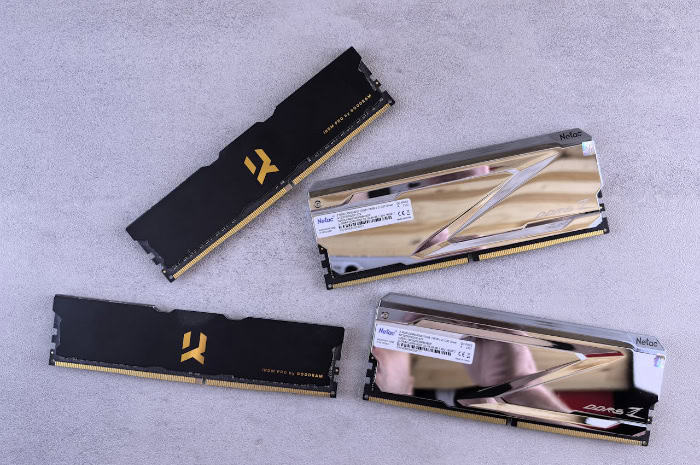
Memory requirements have become a hot topic among computer users, from casual browsers to professional creators. Random Access Memory (RAM) serves as your computer's workspace, determining how smoothly applications run and how many tasks you can juggle simultaneously.
While some users thrive with 8GB of RAM, others find themselves maxing out 32GB during intensive workflows.
Choosing the right amount of RAM can significantly impact your computing experience and productivity. Too little memory forces your system to constantly shuffle data between RAM and storage, creating frustrating slowdowns.
Excess RAM, however, might be wasted money that could be better spent on other components.
Understanding RAM Basics
RAM functions as your computer's short-term memory, temporarily storing data that your processor needs to access quickly. While storage devices hold your files, programs, and operating system permanently, RAM loads these elements for active use.
For example, opening a large spreadsheet moves its data from storage to RAM, allowing you to edit cells and perform calculations instantly.
Your computer constantly transfers data between RAM and storage. With sufficient RAM, your system maintains quick response times as you switch between applications or browser tabs.
However, if RAM fills up, your computer must rely more heavily on slower storage devices, creating noticeable slowdowns and lag in system performance.
RAM Speed and Timing
Memory speed significantly influences how quickly your system can process data. Modern RAM typically operates at frequencies between 2400MHz and 4800MHz, with higher frequencies enabling faster data transfer rates.
However, raw speed isn't the only factor affecting performance.
Dual-channel memory configurations can nearly double memory bandwidth by allowing two RAM sticks to work simultaneously. Most modern motherboards support dual-channel operation, making it beneficial to install matched pairs of RAM modules rather than single sticks.
Memory latency also affects real-world performance. Measured in nanoseconds, latency determines how quickly RAM responds to requests.
Lower latency values mean faster response times, though these improvements might be less noticeable than frequency gains in everyday use. Common latency ratings include CL16 or CL18, with lower numbers indicating better performance.
The interaction between frequency and latency creates your RAM's overall performance profile. High-frequency RAM with reasonable latency typically provides the best balance for most users, though specific workloads might benefit from optimizing one aspect over the other.
RAM Requirements by User Profile
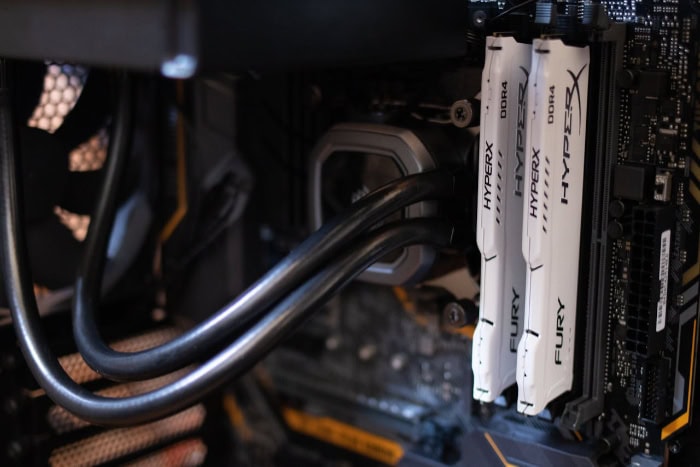
Different computing tasks demand varying amounts of RAM to run smoothly. Your ideal RAM configuration depends heavily on how you use your computer, from basic daily tasks to demanding professional applications.
Everyday Computing
For basic computer use, including web browsing, email, and office applications, 8GB of RAM serves as a comfortable starting point. Modern web browsers can consume significant memory, especially with multiple tabs open.
A typical setup might include several browser tabs, a word processor, and email client running simultaneously.
Microsoft Office applications generally run well with 8GB, though larger spreadsheets or PowerPoint presentations might benefit from 16GB. Video conferencing applications like Zoom or Teams also perform better with at least 8GB, particularly during screen sharing or virtual background use.
For users who frequently multitask between these applications, 16GB provides additional headroom and future-proofing.
Gaming and Entertainment
Modern gaming demands more substantial RAM configurations. While some games run adequately with 8GB, most current titles recommend 16GB for optimal performance.
Games like Microsoft Flight Simulator or Cyberpunk 2077 can utilize over 10GB of RAM during gameplay, making 16GB the sweet spot for gamers.
Streaming adds another layer of RAM requirements. Running a game while broadcasting to platforms like Twitch or YouTube requires extra memory for encoding software.
Similarly, having Discord, browsers, and other applications open alongside games pushes RAM usage higher. Virtual reality gaming presents even greater demands, with many VR titles recommending 16GB as a minimum for smooth performance.
Professional Applications
Professional workloads often require the most substantial RAM configurations. Content creation software like Adobe Creative Suite can consume massive amounts of memory.
Video editing in Premiere Pro or working with multiple high-resolution images in Photoshop benefits significantly from 32GB or more RAM, especially when handling 4K or 8K footage.
Software development environments, particularly when running virtual machines or mobile device emulators, can quickly exhaust available RAM. Developers often need 32GB to run multiple development tools, compile code efficiently, and test applications in various environments simultaneously.
CAD software and 3D rendering applications represent some of the most memory-intensive tasks. Programs like AutoCAD, Revit, or 3ds Max can utilize all available RAM when working with complex models or scenes.
Professional 3D artists and engineers frequently opt for 64GB or more to handle large projects without performance bottlenecks. Real-time rendering and animation work can push these requirements even higher, making RAM upgrades a worthwhile investment for improved productivity.
Signs You Need More RAM
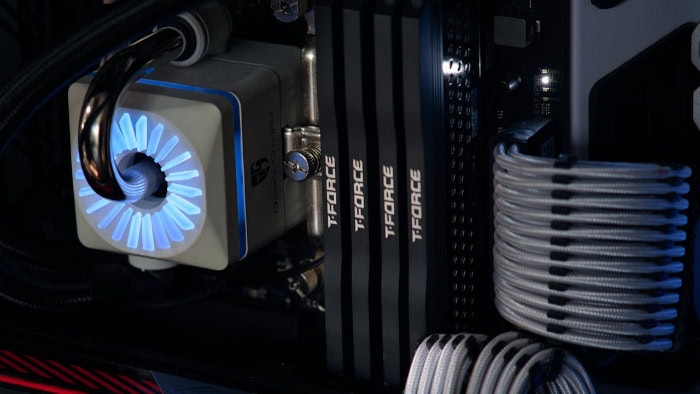
Your computer often shows clear signals when it's struggling with insufficient RAM. Recognizing these indicators early can help you address performance issues before they severely impact your productivity.
Regular monitoring and awareness of your system's behavior will help you determine if a RAM upgrade could improve your computing experience.
Performance Indicators
The most noticeable sign of insufficient RAM is overall system sluggishness, particularly when switching between applications. Your computer might take several seconds to respond when clicking between windows, and new programs may launch slowly.
This happens because your system must constantly move data between RAM and your storage drive to maintain operations.
Application crashes become more frequent as RAM becomes scarce. Programs might close unexpectedly or refuse to launch, displaying “out of memory” errors.
Web browsers might reload tabs when you switch between them, and large applications could freeze during resource-intensive tasks. These issues occur because your system lacks the necessary memory to keep all active programs running smoothly.
Page file usage provides another reliable indicator of RAM limitations. Windows creates a page file on your storage drive to compensate for insufficient RAM.
While this keeps your system running, it operates much slower than actual RAM. If you notice your hard drive is constantly active (indicated by frequent disk activity lights or sounds), your system might be heavily relying on the page file, suggesting a need for more RAM.
Monitoring Tools
Windows Task Manager serves as your first line of defense in identifying RAM-related issues. Opening Task Manager and selecting the Performance tab displays your current RAM usage.
If you regularly see memory usage above 80%, especially during typical workloads, you likely need more RAM. The Memory section also shows how many RAM slots are in use and your current RAM speed.
Memory pressure signs can be observed through Resource Monitor, a more detailed Windows tool. This utility shows memory composition, including standby memory, modified memory, and free memory.
High modified memory levels indicate your system struggles to write data back to storage, while minimal free memory suggests your current RAM capacity is insufficient for your workload.
Performance bottlenecks related to RAM can be identified using specialized monitoring software like MSI Afterburner or HWiNFO. These tools provide detailed information about memory timing, temperature, and usage patterns.
They can help you determine if slow performance stems from RAM limitations or other hardware components. For example, if RAM usage consistently maxes out while CPU and GPU utilization remain low, insufficient RAM is likely bottlenecking your system's performance.
Optimal RAM Configurations
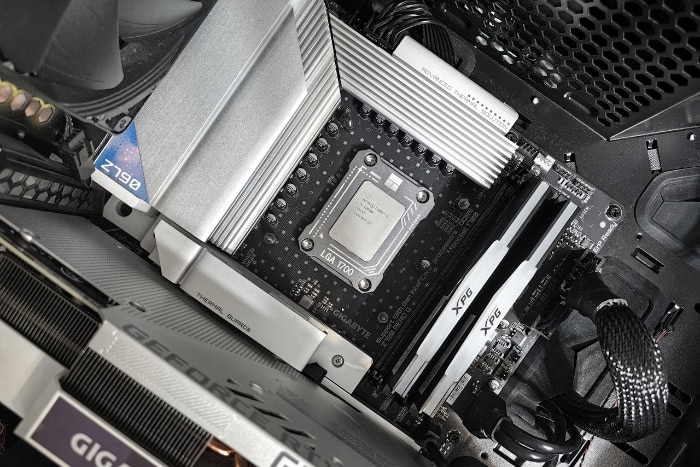
Selecting the right RAM configuration involves more than just choosing an amount of memory. Modern systems benefit from proper RAM setup, including speed matching, channel configuration, and capacity planning.
A well-planned RAM configuration ensures optimal performance for your specific computing needs.
Current Standards
The absolute minimum RAM requirement for Windows 11 stands at 4GB, though this amount severely limits multitasking capabilities. For basic computing in 2024, 8GB represents the practical minimum, allowing comfortable web browsing and light productivity tasks.
However, most users should consider 16GB as their starting point for a smooth computing experience.
Professional users working with content creation, virtual machines, or engineering software should opt for 32GB as their baseline. This amount provides ample headroom for demanding applications while maintaining system responsiveness during heavy multitasking.
High-end workstations often benefit from 64GB or more, particularly for tasks involving large datasets or complex 3D rendering.
Future-proofing your system requires considering both capacity and speed. DDR5 RAM, though currently more expensive, offers significant performance improvements over DDR4 and better upgrade potential.
Choosing a motherboard with four RAM slots allows for gradual upgrades, starting with two matched sticks and adding more as needed.
Memory Channels
Memory channel configuration significantly impacts system performance. Single-channel setups, using one RAM stick, limit memory bandwidth and can create performance bottlenecks.
Dual-channel configurations, achieved by installing matched pairs of RAM modules, nearly double the theoretical bandwidth available to your system.
The bandwidth improvements from dual-channel operation provide noticeable benefits in real-world usage. Applications launch faster, large files load more quickly, and system responsiveness improves.
Gaming performance can see substantial gains, particularly in CPU-limited scenarios where memory bandwidth affects frame rates.
Installation configurations require careful planning to maximize performance. RAM modules should be installed in matched pairs using the correct slots specified in your motherboard manual.
For example, in a four-slot motherboard, two sticks should typically occupy the second and fourth slots for optimal dual-channel operation. Some high-end platforms support quad-channel memory, offering even greater bandwidth through four matched modules.
Speed matching between RAM modules proves crucial for stability and performance. All installed modules should share identical specifications for frequency, timing, and voltage.
Mixing different RAM speeds forces all modules to operate at the speed of the slowest stick, potentially leaving performance on the table. Similarly, mixing RAM generations (like DDR4 and DDR5) isn't possible, as motherboards support only one generation at a time.
Cost-Benefit Analysis
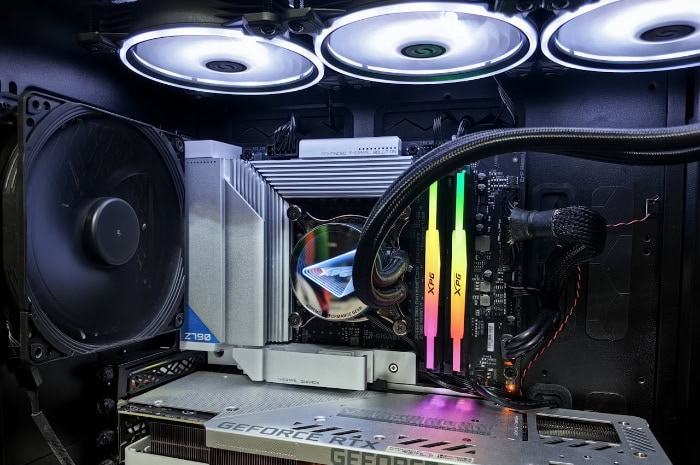
Investing in RAM requires careful consideration of both immediate performance benefits and long-term value. While RAM upgrades can significantly improve system performance, the financial investment must align with your computing needs and budget constraints.
A thoughtful analysis of costs and benefits helps determine the most effective RAM configuration for your situation.
Upgrade Value
Performance improvements from RAM upgrades vary based on your current configuration and usage patterns. Users upgrading from 8GB to 16GB often notice immediate benefits in multitasking capability and system responsiveness.
Applications launch faster, switching between programs becomes smoother, and browser tabs remain active longer without reloading.
Productivity gains can justify RAM upgrade costs, particularly for professional users. Content creators might save hours of rendering time with adequate RAM, while developers can run multiple development environments simultaneously without slowdowns.
These time savings translate directly into increased productivity and potential revenue for professional users.
System longevity also factors into the value equation. A computer with sufficient RAM remains useful longer, postponing the need for a complete system replacement.
Modern applications tend to require more RAM over time, so choosing a higher capacity now can extend your system's useful life by several years.
Investment Considerations
Price per gigabyte varies significantly between RAM types and generations. DDR4 memory offers excellent value, with prices typically ranging from $3-5 per gigabyte.
DDR5, while offering superior performance, commands premium prices of $6-10 per gigabyte. These costs fluctuate based on market conditions and manufacturing availability.
Compatibility factors influence both initial costs and future upgrade potential. Motherboard specifications determine maximum RAM capacity, supported speeds, and the number of memory channels.
Some systems require specific RAM configurations for optimal performance, potentially limiting your choice of modules or increasing costs. Server-grade ECC memory, required by some workstations, carries a significant price premium over standard RAM.
Upgrade timing can significantly impact value. RAM prices often fluctuate throughout the year, with substantial differences between high and low points.
Planning upgrades during price dips maximizes value, though urgent performance needs might outweigh potential savings from waiting. Additionally, considering the age of your current system helps determine if a RAM upgrade makes sense compared to investing in a new computer.
The sweet spot for RAM investment varies by user profile. Casual users might find excellent value in 16GB configurations, while professionals often see strong returns on 32GB or larger setups.
The cost-benefit ratio typically diminishes beyond certain thresholds – for example, upgrading from 64GB to 128GB provides minimal benefits for most users while significantly increasing costs.
Conclusion
RAM requirements vary significantly based on your computing needs and usage patterns. Basic users can function well with 8GB, though 16GB provides a more comfortable experience for most people.
Gamers and content creators benefit from 32GB configurations, while professional workloads might demand 64GB or more.
Monitoring your system's performance indicators helps determine if a RAM upgrade would improve your computing experience. Signs like frequent slowdowns, application crashes, or high memory usage suggest the need for additional RAM.
Modern systems benefit most from matched pairs of RAM modules running in dual-channel configurations.
Before purchasing RAM, consider both immediate performance needs and future requirements. Balance the cost per gigabyte against potential productivity gains and system longevity.
Remember that proper RAM configuration matters as much as total capacity – matching speeds, timing, and compatibility ensure optimal performance from your investment.


